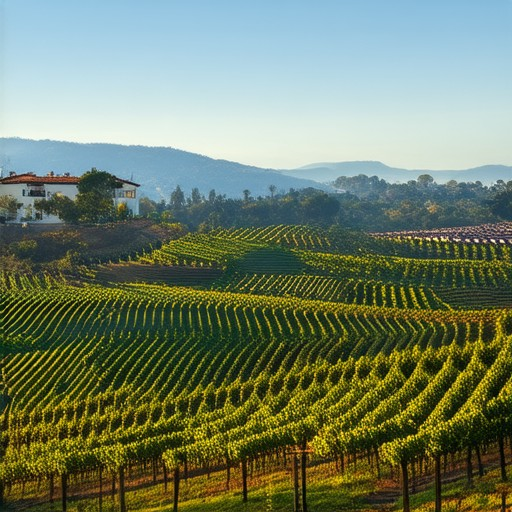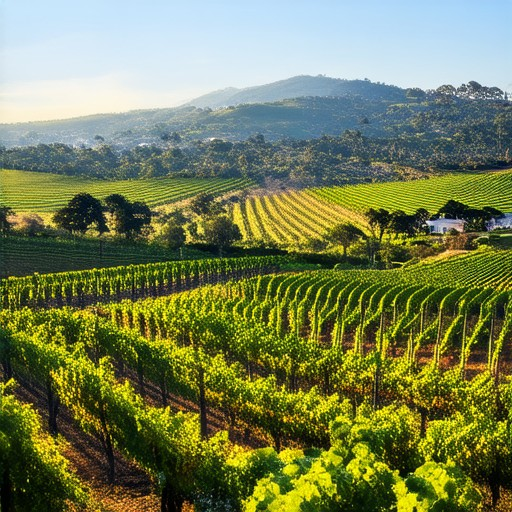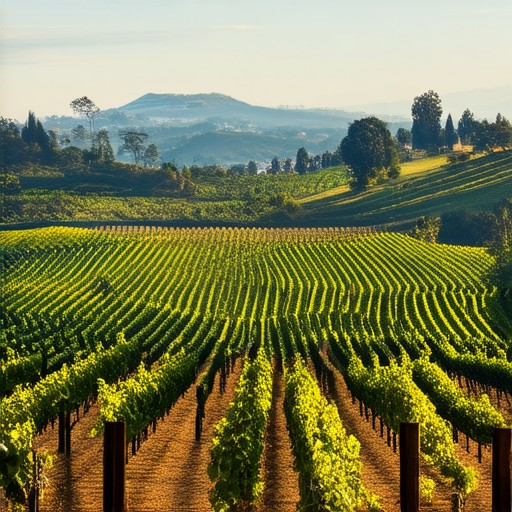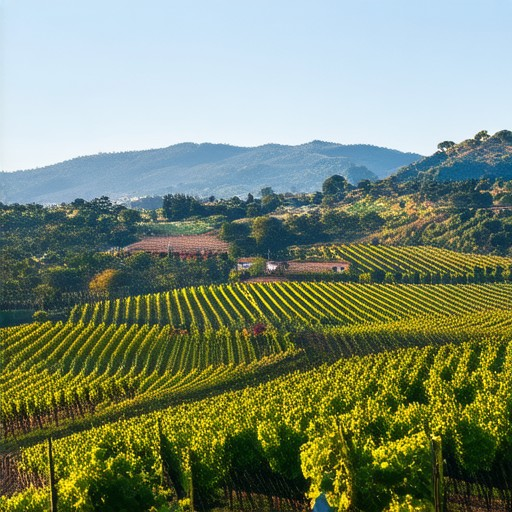The diverse landscape of California offers an extraordinary array of wine regions, each with its unique terroir, climate, and cultural influences, making it a haven for wine enthusiasts. From the renowned Napa Valley to the charming hills of Sonoma, California’s wine country is celebrated worldwide for its high-quality vintages and breathtaking scenery. For those looking to navigate this vast and complex wine country, a detailed map becomes an essential tool, offering insights into the state’s top wine regions and their distinctive characteristics. Whether you’re debating whether to visit Napa or Sonoma, curious about the best wine-producing areas, or eager to explore the factors that influence wine quality, this guide provides a comprehensive overview. By examining the key wine districts, comparing Napa and Sonoma, and delving into the grape varieties that thrive here, we aim to help you plan your ideal California wine journey. With our detailed map guide, you can uncover the secrets of California’s wine regions, discover the top wineries, and gain a deeper appreciation for the art and science behind its world-renowned wines.
Key Takeaways
– Discover the Heart of California Wine Country: Napa Valley leads with over 400 wineries, offering a diverse range of world-class wines and vineyard experiences.
– Explore Sonoma County: Known for its laid-back charm and hundreds of wineries, Sonoma is a top destination for wine enthusiasts.
– Top-Tier Wineries: From Opus One to Kistler Vineyards, California boasts some of the world’s finest wineries, each offering unique flavors and styles.
– Grape Production Powerhouse: Lodi-Woodbridge reigns as California’s grape capital, producing nearly 40% of the state’s premium wine grapes.
– Plan Your Wine Journey: Whether you prefer bold Napa Reds or crisp Sonoma Whites, California’s wine regions offer endless possibilities for exploration and tasting.

What Are the Wine Districts in California?
California is renowned for its diverse wine regions, each offering unique terroirs and grape varieties. Below is a breakdown of the major wine districts in California:
1. Napa Valley
Napa Valley is one of the most famous wine regions in the world, known for its luxury wineries and high-quality production. It is home to iconic labels like Opus One and Trefethi . The valley is divided into smaller appellations such as Stag’s Leap, Rutherford, and Oakville.
2. Sonoma County
Sonoma County boasts a rich viticultural history and offers a wide variety of wine styles. Notable regions within Sonoma include Kistler Vineyards and Gary Franklin Wines . The county is known for its Pinot Noir and Chardonnay productions.
3. Central Coast
The Central Coast wine region spans from Santa Barbara to Paso Robles. This area is characterized by its coastal influence and diverse soils. Notable wineries in the region include Latin Reach Vineyards and Paso Robles Wine Association .
4. Sierra Foothills
The Sierra Foothills region is located in the foothills of the Sierra Nevada mountains. This area is known for its Zinfandel production and includes notable wineries like Vineyard 28 and Sutter Home Wines .
5. Inland Valleys
The Inland Valleys region encompasses the Central Valley’s interior areas, known for their warm climates and large-scale wine production. This area is home to wineries like Dry Ranch Wines and Shirahige Winery .
6. Southern California
Southern California’s wine regions include areas like the Santa Ynez Valley and the Los Angeles area. Notable wineries in this region include Malbec Wines and Castillo Creek Winery .
7. Far North California
Far North California, including regions like Mendocino and Humboldt Counties, is known for its cool climate wines. Notable wineries in this area include Naked Wines and Hamel Family Wines .
These wine districts collectively produce a vast array of wines, each reflecting the unique characteristics of their terroir. Whether you prefer bold Cabernet Sauvignons or crisp Sauvignon Blancs, California’s wine regions offer something for every palate.
Napa vs. Sonoma: Choosing the Right Wine Country Destination
When deciding between Napa and Sonoma, consider your preferences for wine, atmosphere, and experiences:
- Napa Valley: – Known for: High-end wineries, luxury accommodations, and fine dining. – Wine Types: Ideal for fans of bold Cabernet Sauvignon and buttery Chardonnay. – Experience: Offers a premium, upscale experience with world-class service. – Pros: opulent stays, exclusive tastings, and gourmet meals. – Cons: Higher costs and potentially varied weather conditions.
- Sonoma County: – Known for: Diverse wine varieties and a relaxed, family-friendly vibe. – Wine Types: Features a broad spectrum, including reds, whites, and sparkling wines. – Experience: Provides a more intimate setting with smaller, boutique wineries. – Pros: Affordable options, diverse activities, and a slower-paced environment. – Cons: May lack the prestige of Napa’s marquee names.
Choosing Between Them:
- Opt for Napa if you seek luxury, big-name wines, and high-end dining.
- Visit Sonoma for a more laid-back adventure with diverse wine offerings and outdoor activities.
Both destinations offer unique experiences, so your decision should align with your travel priorities and tastes.

What Part of California Has the Best Wine?
The best wine regions in California are renowned for their exceptional viticulture and world-class production. Among these, several stand out for their unique terroirs, climates, and grape varieties:
- Napa Valley
Napa Valley, located in Northern California, is globally recognized as one of the premier wine-producing regions. Its diverse microclimates and fertile soils support a wide array of grape varieties, from Cabernet Sauvignon to Chardonnay. The region is celebrated for its ability to produce both luxury and everyday wines, with iconic names like Opus One and Jackson Family Wines leading the charge. - Sonoma
neighboring Napa, Sonoma County offers a similarly high-quality wine production. Known for its foggy mornings and warm afternoons, Sonoma benefits from a slightly cooler climate, which enhances the complexity of red wines like Pinot Noir and Syrah. Vineyards such as Kistler Vineyards and Gary Franklin Wines showcase the region’s potential. - Santa Barbara
Santa Barbara, particularly the Santa Ynez Valley, has emerged as a top-tier wine country. Its Mediterranean-like climate and varied terrain allow for distinctive wines, particularly in the Zinfandel and Rhône varietals. Wineries like Babcock Vineyards and Tina Quigg Wines highlight the region’s growing reputation. - Central Coast
The Central Coast, stretching from San Francisco to Paso Robles, is known for its coastal influence and diverse soils. This region excels in producing cool-climate wines, particularly in areas like Haden Wines and Paso Robles Wine Country . The region’s unique character makes it a must-visit for wine enthusiasts.
Each of these regions offers a distinct wine profile, catering to various tastes and preferences. Whether you prefer the opulence of Napa Valley, the elegance of Sonoma, the charm of Santa Barbara, or the boldness of the Central Coast, California’s wine country provides an unparalleled drinking experience.

What City in California Has the Most Vineyards?
Napa Valley claims the title of having the most vineyards in California, with over 400 wineries operating within its borders. This region is renowned for its optimal viticultural conditions, combining fertile soils with a unique microclimate that supports thriving grape cultivation.
- Napa Valley – Over 400 wineries, making it the leader in California’s wine production.
- Sonoma County – Home to hundreds of wineries, contributing significantly to California’s wine industry.
- Santa Barbara County – Known for its high-quality vineyards, particularly in the Santa Ynez Valley area.
- Paso Robles – A notable region with a growing number of wineries, celebrated for its diverse terroirs.
- Sierra Foothills – Features a mix of historic and newer vineyards, adding to California’s wine production diversity.
These regions collectively make California a global leader in wine production, with Napa Valley standing out as the primary hub. For more insights into California’s wine country, explore Fine Vines , your trusted source for comprehensive wine education and exploration.
The Number One Winery in California
California is home to some of the world’s most renowned wineries, particularly in the prestigious Napa Valley region. While determining the “best” winery can be subjective, several standout names consistently earn recognition for their exceptional wines and innovation. Here’s a curated list of top contenders:
- Opus One Wines
Renowned for its Bordeaux-style blends, Opus One has set a high standard in California winemaking. Their iconic reds, like the Napa Valley Red, showcase complexity and elegance, making them a favorite among critics and connoisseurs alike. - Bordeaux Wines
Specializing in Burgundy and Rhône Valley varietals, Bordeaux Wines offers a diverse portfolio that includes both classic and innovative offerings. Their commitment to sustainability and quality places them among the elite. - V. Sattui Winery
Known for its Italian-inspired wines, V. Sattui excels in producing crisp whites and rich reds. Their dedication to family heritage and sustainable practices adds to their appeal. - Schramsberg Vineyards
A leader in hillside viticulture, Schramsberg produces some of the most sought-after Cabernet Sauvignons and Chardonnays. Their history of innovation and excellence makes them a standout. - Kistler Vineyards
Kistler is celebrated for its Burgundian-style Pinot Noir and Chardonnay. Their attention to detail and terroir-driven approach ensure wines of unparalleled quality.
While these wineries are often highlighted, it’s important to note that preferences may vary. Fine Vines encourages exploring these options to discover your personal favorites. For more insights, explore our complete guide to Napa Valley wineries here .

The Grape Capital of California
The grape capital of California is Lodi. This region is renowned for its exceptional wine production, contributing nearly 40% of California’s premium wine grapes. Lodi-Woodbridge offers the ideal growing conditions, including fertile soils and a temperate climate, making it the “Winegrape Capital of the World.”
Lodi’s success is driven by its optimal environment for viticulture, with meticulous attention to detail in grape cultivation. The area boasts diverse microclimates and soil types, enabling the growth of high-quality varietals. This commitment to excellence has solidified Lodi’s position as a leader in grape production.
While neighboring regions like Napa Valley are celebrated for their wineries, Lodi’s focus remains on premium grape cultivation, making it the top choice for grape production in California.
Map of Lodi-Woodbridge highlights its strategic location in the Central Valley, surrounded by rolling hills and vineyards, further emphasizing its agricultural significance.
In conclusion, Lodi stands as the premier grape-producing region in California, consistently delivering high-quality grapes that are integral to the state’s wine industry.



0 Comments